Wonder Bar (1934)
By Toronto Film Society on May 20, 2019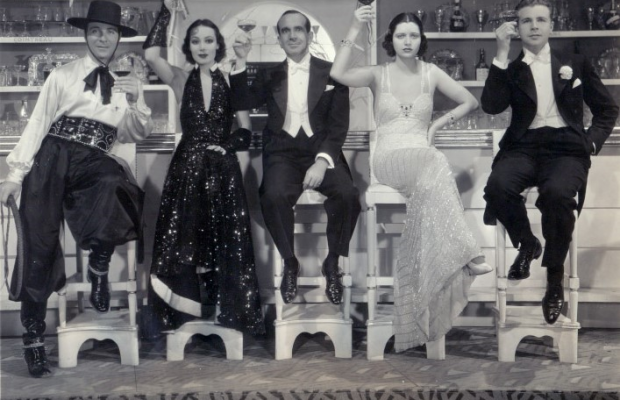
Toronto Film Society presented Wonder Bar (1934) on Sunday, May 19, 2019 in a double bill with Red-Headed Woman as part of the Season 71 Sunday Afternoon Special Screening #11.
Production Company: Warner Brothers. Director: Lloyd Bacon. Screenplay: Earl Baldwin, based on the play by Geza Herczeg, Karl Farkas, Robert Katscher. Choreography Numbers Created and Directed by: Busby Berkeley. Cinematography: Sol Polito. Film Editing: George Amy. Art Directors: Jack Okey, Willy Pogany. Gowns: Orry-Kelly. Initial Release: March 31, 1934.
Cast: Al Jolson (Al Wonder), Kay Francis (Liane), Dolores Del Rio (Inez), Ricardo Cortez (Harry), Dick Powell (Tommy), Guy Kibbee (Simpson), Ruth Donnelly (Mrs. Simpson), Hugh Herbert (Pratt), Louise Fazenda (Mrs. Pratt), Hal Le Roy (Tap Dancer), Fifi D’Orsay (Mitzi), Merna Kennedy (Claire), Henry O’Neill (Richard, the Maitre’d), Robert Barrat (Captain Hugo Von Ferring), Henry Kolker (Mr. R.H. Renaud), Spencer Charters (Pete), Hobart Cavanaugh (Drunk), Jane Darwell (Baroness), Dennis O’Keefe (Chorus Boy).
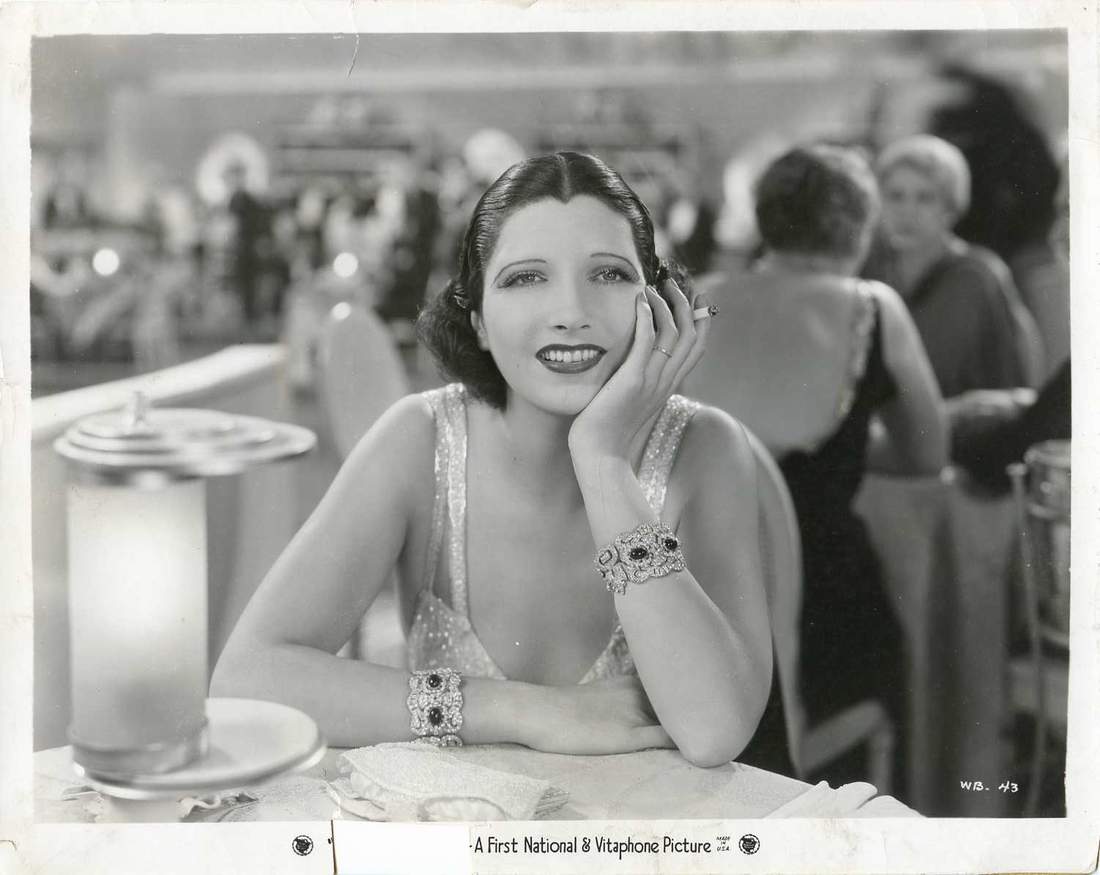
Today we’re going to watch one of the more immoral and racists films of the pre-Code era. There are films today that offer all of these elements in a much more serious and enlightened manner, but in November 1933, when Wonder Bar was being made, no other film appeared to hold all these elements.
Let’s start with the immorality of the film, it was released March 31, 1934 with the Production Code coming into being July 1, just three months later. Along with a number of other films such as Mae West’s three pre-Codes which she also penned, Wonder Bar was a catalyst pushing the Code into law. As some of you may well know, when the Code came into being one of the stipulations was that all people who murdered, whether we thought it was justified or not, would meet their punishment in the end. Without giving too much away, what’s most shocking in this film was that not only does the murderer get away scot-free but the people in the know help dispose of the body in the most uncompassionate way possible–by using the misfortune of a sad and despondent person to make the problem vanish. All is well in the world.
As for the overt racism. Did any White people of that time feel uncomfortable when they viewed the depiction of stereotyping Blacks with Caucasians in blackface? Did Blacks, for that matter, or were the majority just as entertained? How about the studio—did they have a shred of a thought that “this might be offensive; a bit too much” or, because Blacks weren’t a particularly powerful group of people, only care for the bottom line. The racist theme, Al Jolson’s blackface specialty, tacked on at the end of the film is the icing on the cake, so to speak. This finale, “Goin’ to Heaven on a Mule” was supposedly a parody of the fable Green Pastures, which was made into a film in 1936. I don’t think Paul Robeson, who was decidedly one of the most famous Blacks during this time, would have been impressed.
And by no means is this all the film has to offer; there are gay and Jewish jokes, a sadomasochistic dance, fraud, blackmail, adultery, unrequited love, and a wonderful little subplot that what’s good for the goose is good for the gander. Wonderful character actors Guy Kibbee, Ruth Donnelly, Hugh Herbert and Louise Fazenda—who incidentally was married to producer Hal Wallis—play two American couples out for the evening and bicker the whole night through. Hugh Herbert was mostly given the role as a drunk which he always played for laughs. Guy Kibbee played a number of different roles, both comic and serious, but he could match Herbert sway by drunken sway in any given scene which he performed with detailed perfection in the film Laughing Sinners (1931) screened earlier this season.
Also in need of mentioning is that Busby Berkeley created the dance sequences. He and the studios, but not his performers, were lucky there were no laws enforcing workmen’s safety at that time. It was fortunate none of them broke their neck like Esther Williams did when she made Million Dollar Mermaid in 1952 during one of the Berkeley sequences! Busby was the master of musical spectacles that showcased beautiful girls spiraling down staircases, reflections in dozens of mirrors, and kaleidoscoping images. You won’t be disappointed here. And try not to forget to remember that these dances, including the finale “Goin’ to Heaven on a Mule”, are all done on the stage of a nightclub, which in reality would be an impossibility. Something of interest, Merna Kennedy, who plays Fifi D’Orsay’s gold digging partner, was married to Berkeley at the time of the film, although they divorced shortly afterward.
A major point that laughably—or not—stands out is that tap-dancing legend Hal Le Roy was used in the all-white “Goin’ to Heaven on a Mule” finale. I guess they didn’t want to spoil the effect by hiring one of the many talented Black tap dancers who would have given their eye’s teeth for the part.
Kay Francis, a favourite of mine, has a small and unsympathetic role in this film. But still, she wears clothes beautifully. And with Orry-Kelly designing, she looks fabulous. There were issues with the shooting schedule, and in the original Warner Bros. budget for the picture, it was announced that Genevieve Tobin was to play the role.
Ricardo Cortez, another of my favourite pre-Code actors, was up to his villainous best. He was handsome and suave with what I call shark-teeth. He was groomed by Paramount to be a Spanish Latin lover, wanting him to replace Valentino when he left the studio and dying shortly after. Cortez himself knew the impossibility of that responsibility early on, having been born and raised in New York by Jewish-Austrian parents and whose real name was Jacob Krantz.
Wonder Bar was his first important picture for Warners and he had a difficult time dealing with Jolson, who had invested in the picture. Jolson needed this picture to be a success after his last film, Hallelujah, I’m a Bum failed at the box office and he took to micromanaging the other actors while director Bacon failed to intervene. The film turned out to be one of the top-grossing pictures of the year, making Jolson’s investment one of his most lucrative moves of his career.
Ann Dvorak was originally assigned the role of Inez which was played by Dolores Del Rio. She and Cortez play dancing partners and are considered one of the main nightclub attractions. So, it’s kind of funny when they take their bows to great applause when we, the screening audience, have completely forgotten about them because we’ve just been awed by Berkeley’s beautiful, glamorous and even bizarre images which they had no part of.
In any event, I hope no one takes any offense but totally enjoys this very pre-Code film.
Sourced: The Magnificent Heel: The Life and Films of Ricardo Cortez by Dan Van Neste (2017)
Introduction by Caren Feldman
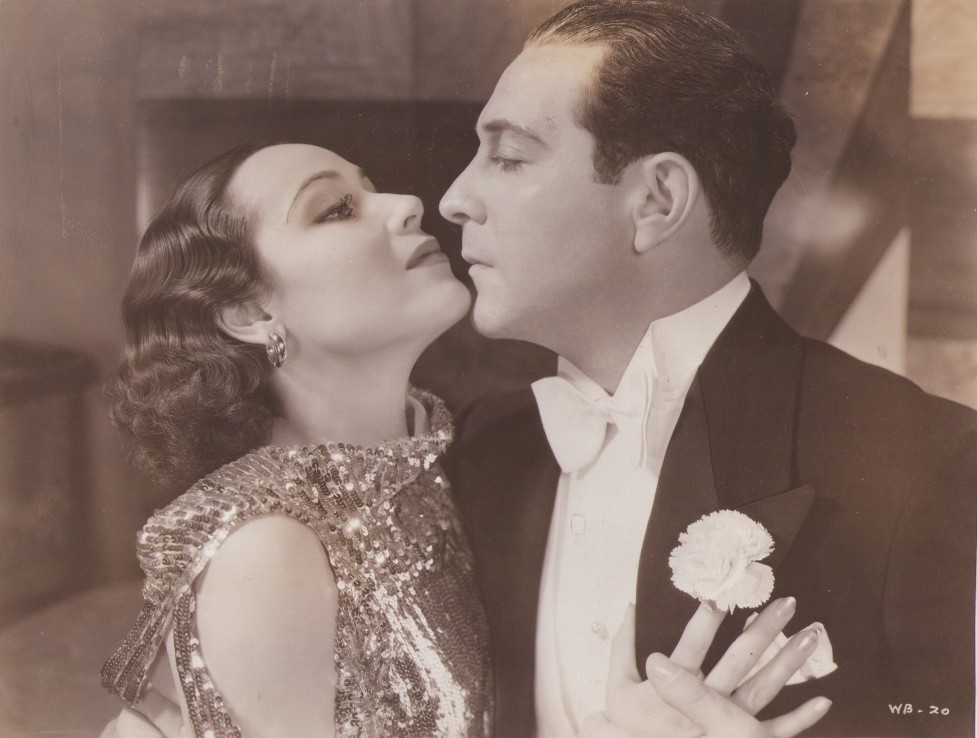
A sort of musical Grand Hotel, with murder, romance, and infidelity mixed in between the numbers, Wonder Bar, made in 1933 though released the following year, is a kind of last grand slam for the pre-Code morality. Like Night Nurse, it is almost totally amoral, with infidelity treated as being (a.) a joke and (b.) commonplace; murder condoned and the killer going scot-free; and a suicide not only accepted but encouraged for the purpose of tidying up loose plot ends. Furthermore, some of the racism—and racy dialogue—has to be heard to be believed; some of it being so doubtful that, to quote Oscar Wilde, there is in fact no doubt at all! Yet, taken in the milieu of the time, and admitting the very real humor that often results, it is really largely inoffensive, and if Jews, Negroes, and homosexuals seem to take a particular beating in this one, there’s some comfort in the thought that in the last reel God, St. Peter, and Abraham Lincoln get taken down a peg or two, as well.
Directed at top speed by Lloyd Bacon, the film has the same crackling pace as his earlier and admittedly more substantial 42nd Street. The story-lines keep moving ever forward, the cameras swoop and glide over the glittering set, and if the comedy relief is a bit tiresome at times, it is probably only because we’ve now seen Messrs Kibbee, Herbert, Donnelly, and the other Warner contractees go through these same paces so many other times. Jolson, incidentally is perfectly cast, his bombast and ego comfortably absorbed by his role as star/impresario. The film has about the same quota of songs as most of the big Warner musicals of the period. There are only two big production numbers, as opposed to the usual three, but against this the running time is shorter, and the more dramatic framework allows for better spacing of the various musical interludes. Indeed, the biggest Berkeley number is introduced very casually, quite early in the proceedings. This number, “Don’t Say Goodnight”, has all the traditional Berkeley wizardry and much of that breathtaking crane work and overhead pattern weaving, but for once it’s a number that could—feasibly and mechanically—take place in a night-club. Feasible—but not very likely—and the customers would still have to be perched by the skylight to get the most out of it! Small wonder that the audience applauds so enthusiastically as it comes to a close!
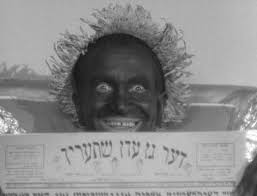
The final number, “I’m Going to Heaven on a Mule”, is something of a revelation. When Wonder Bar played at the New Yorker on a single-day booking, a few years back, the complaints in their guest book were quite vehement from those who felt it was a kind of paean to Uncle Tom racism. Actually, the poor innocents were not even aware that the New Yorker print was a working TV print in which the whole middle section of the number, with the most blatant stereotypes, had been bodily removed. This print has the number intact, and it gets more and more astounding as it progresses! Physically, this is one number that couldn’t be staged in a night-club, and ethically and intellectually, it’s a number that probably wouldn’t be staged anywhere. Here at the Huff, we’re so inured to minority-group comedy and stereotypes in films of the ’20s and ’30s that it is certainly not going to produce any reactions of shock and indignation, but I daresay it’ll cause a little surprise. If the pressure-groups were so inclined (and if they knew their facts and film history a lot better than they do!), this little hot potato could well be made the standard-bearer for a whole new crusade, which at least would have the salutary effect of taking some of the ill-deserved heat off The Birth of a Nation! However, at that, there’s a remarkably thin line between Busby Berkeley’s Negro heaven here and that of Green Pastures. However well intentioned, Green Pastures, which once seemed so moving and sincere, today seems maudlin and offensive. Stereotypes or not, Al Jolson’s minstrel heaven is at least livelier and more entertaining!
William K. Everson for The Theodore Huff Memorial Film Society, December 22, 1964
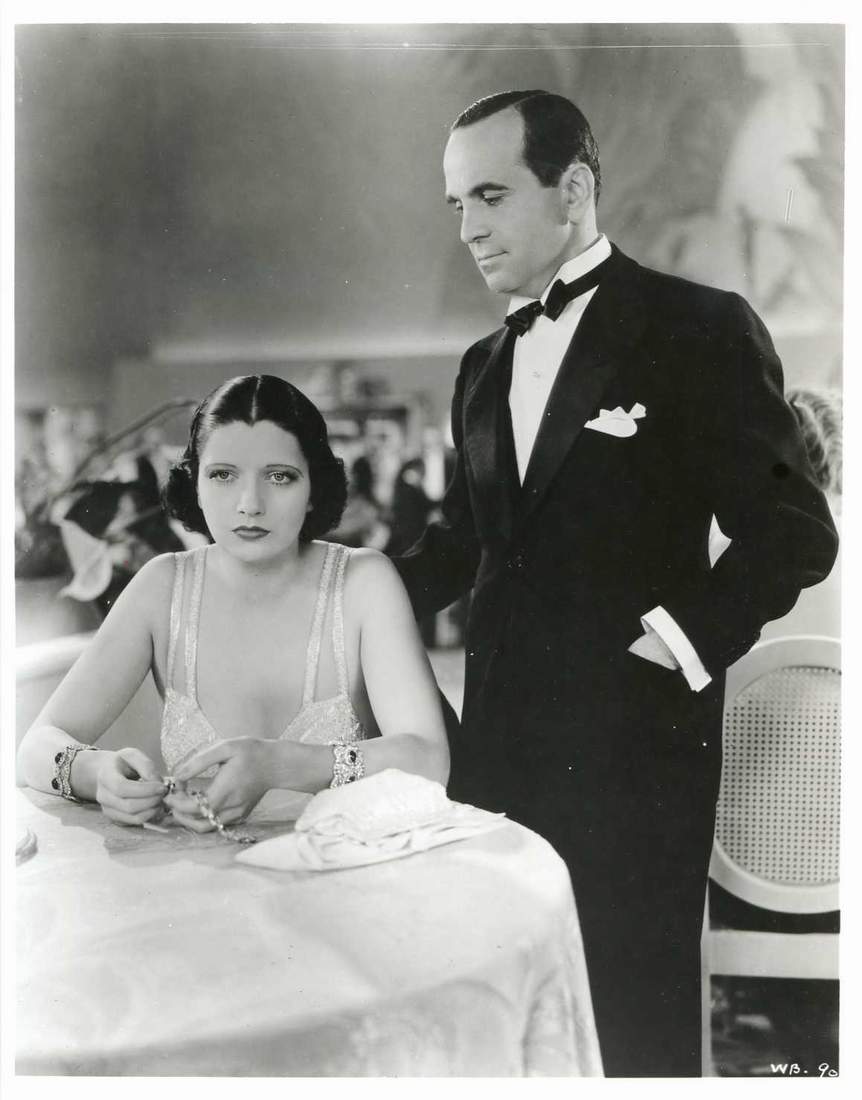
Shortly before Busby Berkeley’s wedding ceremony, Wonder Bar was sneaked into Santa Barbara, and a New York showing was fast approaching. In the papers, Buzz was quoted as wanting “something new, something different.” It was reported that Buzz had supervised the construction of a circular, revolving soundstage with sixteen immense, glistening sheets of glass enveloping a revolving black floor. Engineers, carpenters, electricians, ironworkers, and prop men worked for weeks. An iron track was built near the roof of the soundstage to carry the derricks, machinery, camera, and sound equipment to make those top shots. The restaurant, where Dick Powell sings and Dolores Del Rio and Ricardo Cortez dance, occupied an entire First National soundstage. Seven hundred great lamps as well as numerous spotlights were used to light the set.
The Production Code of 1930, in effect when Wonder Bar was filmed in late-1933, specifically states: “The sanctity of the institution of marriage and the home shall be upheld. Pictures shall not infer that low forms of sex relationships are the accepted or common thing.” With regard to crime, the Code states: “[They] are not to be presented in such a way as to throw sympathy with the crime as against law and justice.” If ever there was a film that thumbed its nose at the Studio Relations Committee, it was Wonder Bar, an adult-themed update of the 1931 Broadway play.
Al Jolson is Al Wonder, the proprietor, emcee, and performer of the notorious Parisian nightclub where drinking, dancing, and assignations of all types take place. Assisting him in the club is Dick Powell in a decidedly minuscule role as his backup singer. The dancing couple Ynez and Harry (Dolores Del Rio and Ricardo Cortez) perform at the Wonder Bar, while getting into romantic entanglements with Al, Dick, and Liane (a dour Kay Francis). Hugh Herbert and Guy Kibbee, along as comic relief, play henpecked husbands who rely on strong drink to help them tolerate their harridan wives. In the club they meet a pair of Parisian tarts (Fifi D’Orsay and Merna Kennedy) who have gold-digging ideas for the drunken twosome.
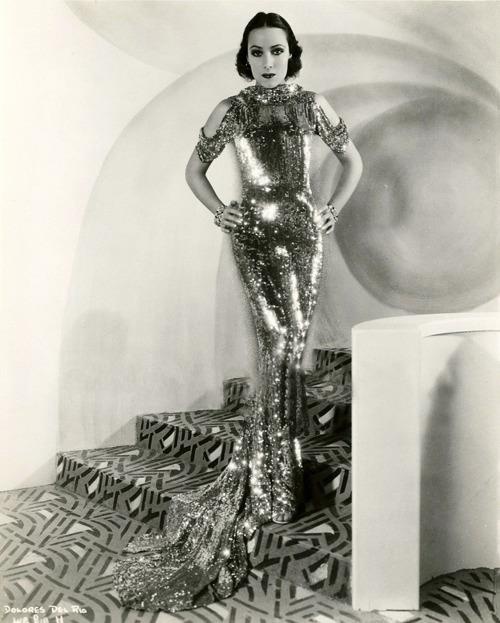
Buzz’s work on Wonder Bar consisted of two major productions. The first, “Don’t Say Goodnight,” is a magician’s trick of epic proportions. With an imagination fueled by his recent major successes, Buzz takes the number into a dimension as vast as the reflection of two facing mirrors. The staging is pure escapist, purportedly at the nightclub as Harry and Ynez perform a dance amoureuse. The sequence segues to a set filled with dozens of movable white columns from which some sixty masked chorines appear. But are there really sixty dancers? Buzz asked Warner Brothers’ property department head Albert Whitey for twelve mirrors, each of which was to be twenty feet high and sixteen feet wide. The mirrors were placed on revolving floors in an octagonal arrangement. The columns slide in and out as masked male dancers join the girls. So brilliant is the conception that one scarcely realizes which dancers are mirror images. At the apex of the number, one black curtain is raised to reveal more reflections, followed by a second curtain and a third revealing the manufactured image of thousands of dancers, all caught with an incognito camera that, by all the laws of reflective physics, should be seen in the octagonal mirrors. This kind of visual spectacle is one of Buzz’s very best, heartbreakingly beautiful in its technique. When the magician reveals his secret, the effect is no less impressive. “The cameraman and the front office thought I was crazy because they thought the camera would show in the mirrors, but I tricked it so it would never show,” explained Buzz. With a miniature set of mirrors in his office, Buzz experimented with a pencil that had a small strip of white tape on it. He moved the pencil around to the point where he could look at the tiny mirrors and not see the white tape. The camera would act like the white tape. Buzz had it placed on a piece of pipe (the pipe acting as the pencil). Where the mirrors butted together stood a narrow white column. If the camera was placed in just the right position facing the column, its reflection wouldn’t be seen. But what about the camera operator? Per Buzz: “We finally had to dig a hole through the stage floor and we put the camera on the piece of pipe. The operator laid flat on his stomach underneath the stage and crawled and moved around slowly with the turning of the camera.” It’s a splendid, awe-inspiring effect whose power and trickery isn’t diminished even after multiple viewings.
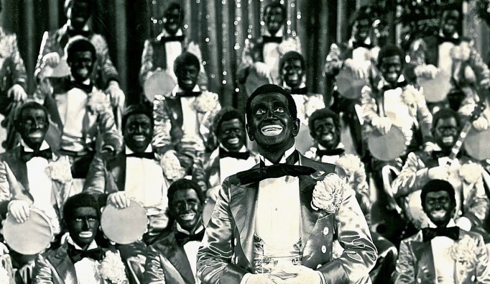
“Ever since I was a little pickaninny, I rode an old Missouri mule,” begins the second of Buzz’s contributions to Wonder Bar, the interesting, controversial, offensive, and blatantly racist “Goin’ to Heaven on a Mule.” Jolson, in blackface, straw hat, and overalls, sings to a young child of Judgment Day when he passes away and how he wants to arrive at the pearly gates with Zeke, his mule, by his side. A moment later, the lights turn low (Judgment Day has evidently arrived), a choir hums in the background, and the image blends to a beautifully rendered effect when, in the distance, Jolson and Zeke cross a long, rainbow-style archway into heaven. Jolson is admitted, meeting and greeting Saint Peter, who announces his arrival: “Here you is in da hebbinly land where da good folks go.” Jolson gets introduced all around to Gabriel and three little seraphs (harps, wings, and blackface). He’s fitted with his own wings and witnesses an angel being sent by chute to hell because he passed some bad liquor to Peter. “Oh, Saint Peter, is I goin’ to where da pork chops am a-growin’ on da trees? Tell me, is I goin’ where da watermelon vines are blowin’ in da breeze?” asked Jolson. “Yes, you is and da chickens am free,” says Peter. He’s then directed to the “Pork Chop Orchard and the Possum Pie Grove,” where, indeed, the thin trees (resting on porcelain pigs) have pork chops hanging from the branches. He recognizes acquaintances like Ol’ Black Joe and Uncle Tom on his way to the chicken area, where they’re plucked and rotisseried in the blink of an eye. Rubbing his hands in anticipation, he takes a quick bite. Jolson then boards the Milky Way/Lenox Avenue Express, and the action shifts to a bustling street scene. Stopping for a shoe shine, he whistles for a newspaper (a Yiddish newspaper!) before journeying to the “Big Top Cabaret.” There he shakes hands with Emperor Jones and grabs some dice, hoping to roll some sevens. The camera does a swift pan to a winged Hal Le Roy (a Warner Brothers actor-dancer) as he taps in front of a dozen blackfaced ladies holding up human sized watermelon slices. The cabaret customers go into a final chorus of the song while Zeke reappears, sporting wings of his own. The ensemble sings with a choir’s passion, arms outstretched (à la “Remember My Forgotten Man” from Gold Diggers of 1933), as the number ends with a close-up on a decorated Al Jolson, who obviously made good at the heavenly crap table.
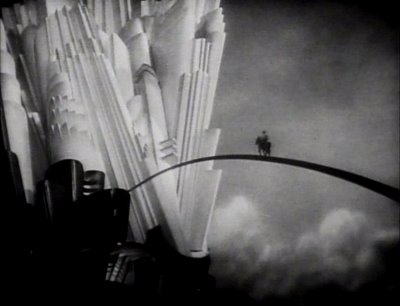
“Goin’ to Heaven on a Mule” was not pre-recorded, as many musical numbers were by that point. It was usually a director’s decision to do a “standard record,” where the orchestra is playing out of camera range, and this is what Buzz preferred. He didn’t want Jolson tied to a playback. So cast, crew, and orchestra all worked on Warner Bros.’ Stage 2. It would be disingenuous to laud “Goin’ to Heaven on a Mule” for its directorial wizardry without noting the inflammatory nature of its racist imagery and derogatory lyrics. Buzz Berkeley’s numbers up to this point (and indeed most features from any studio) featured Negro performers in denigrating roles such as butlers, maids, field hands, and Pullman porters. Complaints from moviegoers of color regarding their depiction in feature films were seldom voiced, the exceptions coming from the NAACP (National Association for the Advancement of Colored People) and publications such as The Norfolk Journal and Guide. (Conversely, when asked about her numerous servant roles, actress Hattie McDaniel, with a touch of realistic cynicism, once said she’d rather play a maid than be one.) The tolerance of the nation (or, more accurately, the lack of intolerance) for blatant stereotyping is most revealing in the March, 1934 New York Times review of Wonder Bar by Mordaunt Hall, when he cites the “several amusing features” of the number while blithely ignoring its racism. A rumor that Warner Brothers completely excised the number from the prints that ran in theatres primarily patronized by minority audiences is without substantiated proof. Buzz himself referred to “Goin’ to Heaven on a Mule” only in regard to the octagonal mirrors that he employed on this and “Don’t Say Goodnight.” But as Buzz was a literalist (in the most spectacular fashion) with lyrics that supplied the base to his concoctions, it’s somewhat understandable that his visuals complemented the words without obscuring their meaning. The number’s link to nineteenth-century minstrelsy and Jolson’s blackface embodiment of the lowly sharecropper were the skeletal elements with which the number was built. Its dreamlike set pieces (the tree of hanging pork chops, the life-size watermelons) were never designed to be hateful. The reality of Buzz’s relatively staggering budgets meant eschewed sensitivity to any one group; his true goal was “to get the shot and make it pretty.” (If one adds Jolson’s knowing glance as he’s seen reading the Yiddish newspaper, you now have two affronted minority groups.) But the responsibility for the number is Buzz’s, and the final word on its inclusion was the studio’s, and even an image as lovely and haunting as Jolson and his mule waking on the rainbow bridge to the “hebbenly gates” cannot justify its overall prejudicial imagery.
Wonder Bar could have been the impetus for the Studio Relations Committee’s changing its name (and authority) to the Production Code Administration in 1934, when movie-going was at pre-Depression levels. Soon after Wonder Bar was released in March of 1934, the Catholic Church’s Legion of Decency was established, and within a month it had three million members. There were certainly enough objectionable elements in Wonder Bar to fuel their wrath, including:
A man and a woman are dancing when a mustachioed dandy taps on the man’s shoulder. “May I cut in?” he asks. “Why, certainly,” says the woman. But the questioner takes hold of the man, and they dance off together. With a hand on his hip and limp-wristed, outstretched arm, a fey Al Jolson quips, “Boys will be boys, wooo!”
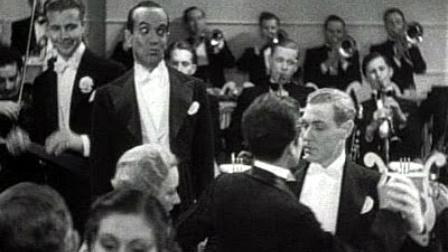
Jolson’s opening number, “Vive la France,” boasts that in gay Paris, “The wine is stronger; the kisses last much longer,” among other suggestive lyrics.
For two of his American customers, Jolson defines the word boudoir—“In America, it’s a place to sleep. Over here, it’s a playground.”
The dance of Dolores Del Rio and Ricardo Cortez is undisguised sadomasochism, as Cortez repeatedly cracks a long bullwhip at the head and shoulder of his partner. At the number’s end, she stabs him with his knife and never pays for her crime, in direct violation of the 1930 Code.
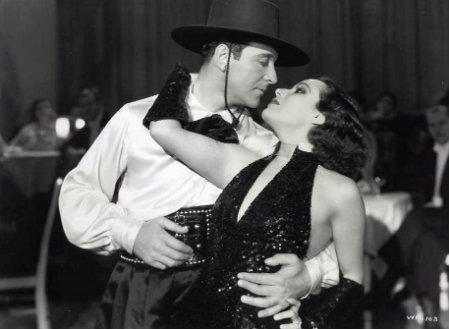
Joseph Breen, the head of the Studio Relations Committee, strongly objected to the many salacious elements of Wonder Bar (and, as Variety expressed it, the film’s “panze humor”), but Jack Warner never responded to them. Executive producer Hal Wallis didn’t bother to show the SRC “Goin’ to Heaven on a Mule,” instead telling them “there was nothing to worry about.”
Buzz: The Life and Art of Busby Berkeley by Jeffrey Spivak (2011)
Notes compiled by Caren Feldman
You may also like...
-
News

Frances Blau
Toronto Film Society | February 27, 2024On Monday, February 26th, 2024, Toronto Film Society lost longtime friend, supporter, and board member Frances Blau. Known for her sense of humour, her love of film, her generosity,...
-
Special Events

Arsenic and Old Lace (1944) at the Paradise Theatre
Toronto Film Society | April 21, 2024Toronto Film Society presents Arsenic and Old Lace (1944) at the Paradise Theatre on Sunday, May 5, 2024 at 2:30 p.m. Screwball comedy meets the macabre in one of...
Programming

Virtual Saturday Night at the Movies
Toronto Film Society | April 11, 2024Toronto Film Society is back in the theatre! However, we’re still pleased to continue to bring you films straight to your home! Beginning Season 73 until now we have...
4-
 Toronto Film Society | April 21, 2024
Toronto Film Society | April 21, 2024
-
 Toronto Film Society | November 6, 2022
Toronto Film Society | November 6, 2022
-
 Toronto Film Society | August 1, 2023
Toronto Film Society | August 1, 2023
Donate to Toronto Film Society – We’re now a Registered Charity!
-
Copyright © 2017 Toronto Film Society.

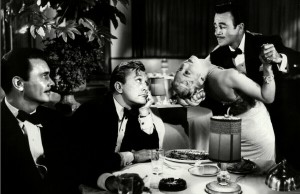
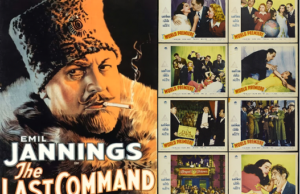
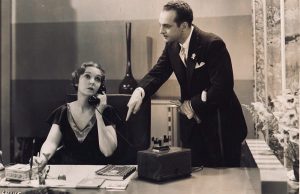
[…] The Toronto Film Society‘s piece includes a quote from professor and author William K. Everson’s film notes from when he showed the movie to a film society in December 1964: […]